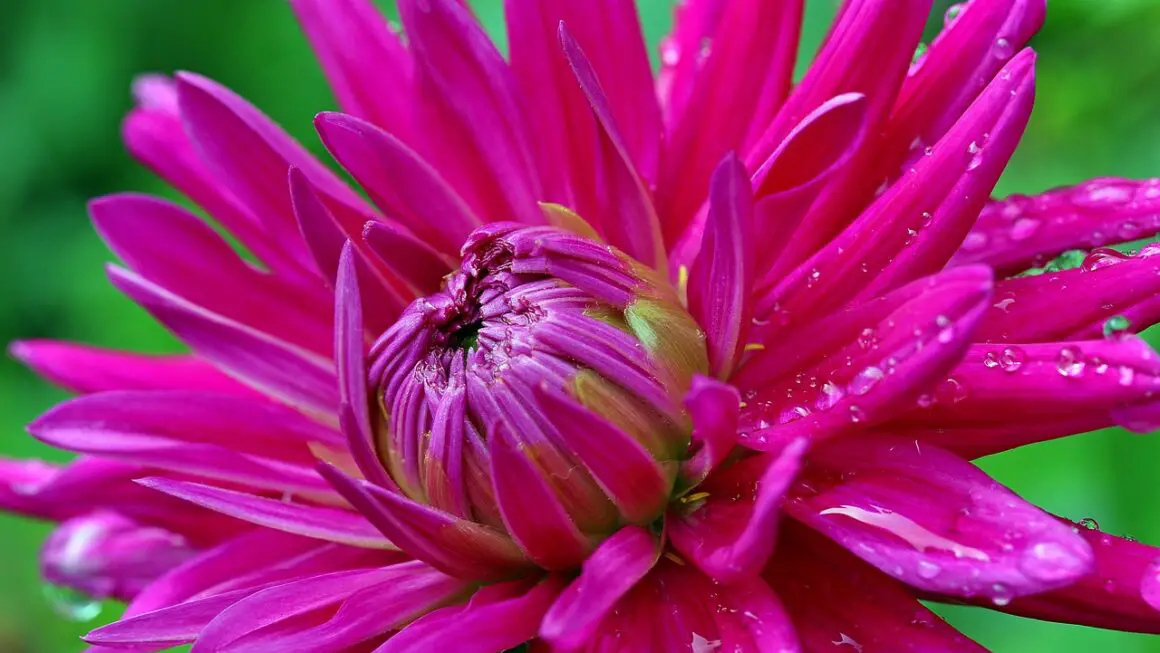Imagine plucking a ripe tomato, still warm from the sun, from a vine just steps from your kitchen. Urban gardening, once a niche hobby, is blossoming into a widespread movement, empowering city dwellers to cultivate fresh produce, connect with nature, and contribute to a more sustainable lifestyle, all within the confines of their urban environments. Whether you have a sprawling balcony or just a sunny windowsill, the possibilities for creating your own urban oasis are endless. Let’s dig in and explore the world of urban gardening!
Why Urban Gardening? Unearthing the Benefits
Urban gardening offers a wealth of advantages, extending far beyond just access to fresh food. It’s a holistic approach to improving well-being and contributing to a healthier environment.
Health and Well-being
- Access to Fresh, Healthy Food: Grow your own organic fruits, vegetables, and herbs, free from pesticides and herbicides. You control what goes into your food, ensuring optimal nutrition.
- Physical Activity and Stress Relief: Gardening provides gentle exercise and a therapeutic outlet for stress. The simple act of nurturing plants can be incredibly calming. Studies show that spending time in green spaces lowers cortisol levels, a key stress hormone.
- Improved Mental Health: Connecting with nature has been proven to boost mood and reduce symptoms of depression and anxiety. Urban gardens offer a welcome escape from the concrete jungle.
- Educational Opportunities: Urban gardening is a fantastic way to learn about botany, soil science, and sustainable living practices. It’s also a great activity to involve children in, fostering a love for nature and healthy eating habits.
Environmental Benefits
- Reduced Carbon Footprint: Growing your own food reduces the need for transportation, packaging, and storage, which significantly lowers your carbon footprint.
- Improved Air Quality: Plants absorb carbon dioxide and release oxygen, helping to purify the air in urban environments.
- Habitat Creation: Urban gardens provide valuable habitats for pollinators like bees and butterflies, contributing to biodiversity in urban areas.
- Reduced Stormwater Runoff: Urban gardens can help absorb rainwater, reducing stormwater runoff and preventing flooding.
Community Engagement
- Community Gardens: Joining a community garden provides opportunities to connect with neighbors, share gardening knowledge, and build a stronger sense of community.
- Educational Workshops: Many organizations offer urban gardening workshops and resources, empowering individuals to learn new skills and connect with like-minded people.
- Food Sharing and Donations: Excess produce can be shared with neighbors, friends, or donated to local food banks, helping to combat food insecurity.
Planning Your Urban Garden: From Concept to Creation
Careful planning is crucial for a successful urban garden. Consider your available space, sunlight, and climate to determine what you can realistically grow.
Assessing Your Space and Sunlight
- Space Inventory: Take stock of your available space, whether it’s a balcony, rooftop, patio, or even just a windowsill. Measure the dimensions of your growing area to determine the size and number of containers you can accommodate.
- Sunlight Evaluation: Observe how much sunlight your space receives throughout the day. Most vegetables require at least 6 hours of sunlight, while herbs and leafy greens can tolerate less. Use a sunlight calculator app or simply observe the area throughout the day.
- Vertical Gardening: If space is limited, consider vertical gardening techniques like wall planters, hanging baskets, or trellises to maximize your growing area. Strawberries, herbs, and leafy greens are excellent choices for vertical gardens.
Choosing the Right Plants
- Climate Considerations: Select plants that are well-suited to your local climate and growing season. Check your local hardiness zone to determine which plants will thrive in your area.
- Space Limitations: Choose compact varieties of vegetables and herbs that are suitable for container gardening. For example, bush beans, dwarf tomatoes, and compact herbs like thyme and oregano are excellent choices.
- Personal Preferences: Grow what you enjoy eating! Start with a few of your favorite vegetables, herbs, or fruits to ensure that you’ll actually use what you grow.
Soil and Containers
- Choosing the Right Soil: Use a high-quality potting mix specifically formulated for container gardening. Avoid using garden soil, as it can become compacted in containers and doesn’t drain well.
- Container Selection: Choose containers that are appropriately sized for the plants you’re growing. Make sure the containers have drainage holes to prevent waterlogging. Terra cotta pots are aesthetically pleasing and allow for good air circulation, but they dry out more quickly than plastic pots.
- Repotting: As plants grow, they may need to be repotted into larger containers. This provides them with more room for their roots to grow and access nutrients.
Essential Urban Gardening Techniques: Nurturing Your Plants
Mastering a few essential techniques will ensure that your urban garden thrives.
Watering and Fertilizing
- Watering Schedule: Water your plants regularly, especially during hot, dry weather. Check the soil moisture by sticking your finger into the soil. If the top inch feels dry, it’s time to water. Water deeply, allowing the water to drain out of the drainage holes.
- Fertilizing: Container plants need regular fertilization, as the nutrients in the potting mix are quickly depleted. Use a balanced, slow-release fertilizer or a liquid fertilizer diluted to half strength. Follow the instructions on the fertilizer packaging.
- Composting: Start a small compost bin to recycle kitchen scraps and yard waste into nutrient-rich compost for your garden. Composting reduces waste and provides a sustainable source of fertilizer.
Pest and Disease Management
- Prevention is Key: Healthy plants are less susceptible to pests and diseases. Provide adequate sunlight, water, and nutrients to keep your plants strong and healthy.
- Integrated Pest Management (IPM): Use IPM techniques to control pests and diseases naturally. This includes hand-picking pests, using insecticidal soap, and attracting beneficial insects like ladybugs and lacewings.
- Organic Solutions: Avoid using harsh chemical pesticides and herbicides. Opt for organic solutions like neem oil, diatomaceous earth, and copper fungicide.
Harvesting and Maintenance
- Harvesting at the Right Time: Harvest your vegetables, herbs, and fruits at their peak ripeness for the best flavor and nutritional value. Research the specific harvesting requirements for each plant.
- Pruning and Deadheading: Prune your plants regularly to encourage bushier growth and remove dead or diseased foliage. Deadheading spent flowers promotes more blooms.
- Succession Planting: Plant new crops every few weeks to ensure a continuous harvest throughout the growing season. This is especially effective for leafy greens and herbs.
Creative Urban Gardening Ideas: Thinking Outside the Box
Get creative with your urban garden design and explore unique ways to maximize your space and add visual appeal.
Vertical Gardening Systems
- Living Walls: Create a stunning living wall using modular planters or fabric pockets. Living walls add a touch of greenery to any space and can be used to grow herbs, leafy greens, or flowering plants.
- Pallet Gardens: Repurpose old wooden pallets into vertical gardens. Pallet gardens are easy to build and can be hung on walls or fences.
- Hanging Baskets: Hanging baskets are a classic way to add color and interest to balconies and patios. Choose trailing varieties of flowers, herbs, or strawberries for a beautiful cascading effect.
Container Gardening Innovations
- Self-Watering Containers: Self-watering containers help to regulate soil moisture and reduce the need for frequent watering. They’re ideal for busy gardeners or those who live in hot, dry climates.
- Grow Bags: Grow bags are lightweight, flexible containers made from breathable fabric. They provide excellent drainage and aeration, promoting healthy root growth.
- Upcycled Containers: Get creative with your container choices by repurposing old buckets, tires, or even shoes into unique planters.
Integrating with Existing Spaces
- Balcony Gardens: Transform your balcony into a lush oasis with a mix of potted plants, hanging baskets, and vertical gardens. Choose plants that are well-suited to the balcony’s exposure and wind conditions.
- Rooftop Gardens: Rooftop gardens offer stunning views and a unique growing environment. However, they require careful planning and structural considerations. Consult with a professional before installing a rooftop garden.
- Windowsill Gardens: Even a small windowsill can be used to grow herbs, leafy greens, or flowers. Choose plants that thrive in bright, indirect light.
Resources for Urban Gardeners: Digging Deeper
Numerous resources are available to help you succeed in your urban gardening journey.
Online Communities and Forums
- Online Gardening Forums: Connect with other urban gardeners online to share tips, ask questions, and get advice. Popular online forums include GardenWeb and Reddit’s r/gardening.
- Social Media Groups: Join gardening groups on Facebook and other social media platforms to stay up-to-date on the latest trends and connect with local gardeners.
- University Extension Websites: Many universities offer comprehensive gardening resources and information on their extension websites. These resources often include regional-specific gardening guides and pest management information.
Local Nurseries and Garden Centers
- Expert Advice: Local nurseries and garden centers can provide expert advice on plant selection, soil preparation, and pest control.
- Plant Selection: They offer a wide variety of plants that are well-suited to your local climate and growing conditions.
- Gardening Supplies: They carry a full range of gardening supplies, including tools, soil, fertilizers, and pest control products.
Books and Magazines
- Urban Gardening Guides: Numerous books and magazines are dedicated to urban gardening, providing detailed information on all aspects of the practice.
- Regional Gardening Guides: Choose gardening guides that are specifically tailored to your region’s climate and growing conditions.
- Online Articles and Blogs: Stay informed about the latest urban gardening trends and techniques by reading online articles and blogs.
Conclusion
Urban gardening is more than just a trend; it’s a powerful way to connect with nature, improve your health, and contribute to a more sustainable future. Whether you’re a seasoned gardener or just starting out, the possibilities for creating your own urban oasis are endless. With careful planning, essential techniques, and a little creativity, you can transform your urban space into a thriving garden that provides fresh food, beauty, and a sense of accomplishment. So, get your hands dirty, embrace the challenges, and enjoy the rewards of urban gardening!



